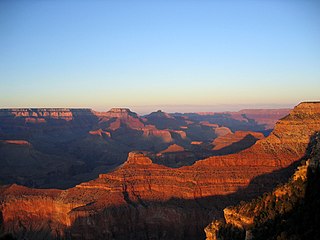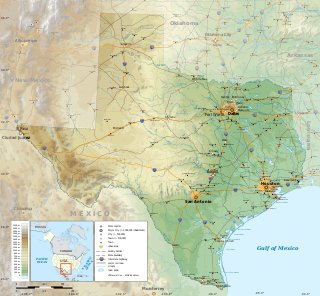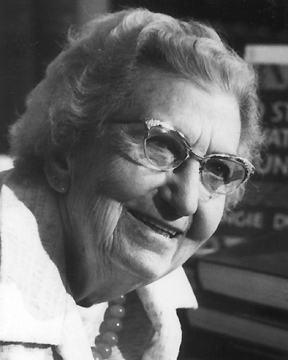Related Research Articles

The Great Plains are a broad expanse of flatland in North America. The region is located just to the east of the Rocky Mountains, much of it covered in prairie, steppe, and grassland. They are the western part of the Interior Plains, which include the mixed grass prairie, the tallgrass prairie between the Great Lakes and Appalachian Plateau, and the Taiga Plains and Boreal Plains ecozones in Northern Canada. "Great Plains", or Western Plains, is also the ecoregion of the Great Plains or alternatively the western portion of the Great Plains.

The Crow, whose autonym is Apsáalooke, also spelled Absaroka, are Native Americans living primarily in southern Montana. Today, the Crow people have a federally recognized tribe, the Crow Tribe of Montana, with an Indian reservation, the Crow Indian Reservation, located in the south-central part of the state.

The Western United States is one of the four census regions defined by the United States Census Bureau.

Wallace Earle Stegner was an American novelist, writer, environmentalist, and historian. He was often called "The Dean of Western Writers". He won the Pulitzer Prize in 1972 and the U.S. National Book Award in 1977.

The Llano Estacado, sometimes translated into English as the Staked Plains, is a region in the Southwestern United States that encompasses parts of eastern New Mexico and northwestern Texas. One of the largest mesas or tablelands on the North American continent, the elevation rises from 3,000 feet (900 m) in the southeast to over 5,000 feet (1,500 m) in the northwest, sloping almost uniformly at about 10 feet per mile (2 m/km).
Stephen J. Pyne (1949–present) is an emeritus professor at Arizona State University, specializing in environmental history, the history of exploration, and especially the history of fire.

The Mescalero Ridge forms the western edge of the great Llano Estacado, a vast plateau or tableland in the southwestern United States in New Mexico and Texas. It is the western equivalent of the Caprock Escarpment, which defines the eastern edge of the Llano Estacado.

The term Cross Timbers, also known as Ecoregion 29, Central Oklahoma/Texas Plains, is used to describe a strip of land in the United States that runs from southeastern Kansas across Central Oklahoma to Central Texas. Made up of a mix of prairie, savanna, and woodland, it forms part of the boundary between the more heavily forested eastern country and the almost treeless Great Plains, and also marks the western habitat limit of many mammals and insects.

Kenneth Ross Toole was an American historian, author, and educator who specialized in the history of Montana. Perhaps the best-known and most influential of the state's twentieth-century historians, Toole served as director of the state's historical society, authored several noted volumes of state history and social commentary, and was a popular professor at the University of Montana for 16 years. He supported environmental protection for Montana's resources, and voiced strong support for labor unions and farmers over big business, especially targeting the railroad and mining industries. These views frequently came into conflict with those of the Anaconda Copper Company and some Montana politicians, most notably Governor J. Hugo Aronson. Toole's views on the role of corporate dominance in Montana history were often controversial, and have been hotly debated by historians.

The geography of Texas is diverse and large. Occupying about 7% of the total water and land area of the U.S., it is the second largest state after Alaska, and is the southernmost part of the Great Plains, which end in the south against the folded Sierra Madre Oriental of Mexico. Texas is in the South Central United States of America, and is considered to form part of the U.S. South and also part of the U.S. Southwest.

The Great Western Cattle Trail is the name used today for a cattle trail established during the late 19th century for moving beef stock and horses to markets in eastern and northern states. It ran west of and roughly parallel to the better known Chisholm Trail into Kansas, reaching an additional major railhead there for shipping beef to Chicago, or longhorns and horses continuing on further north by trail to stock open-range ranches in the Dakotas, Wyoming, Montana in the United States, and Alberta and Saskatchewan in Canada.
Terry Tempest Williams, is an American writer, educator, conservationist, and activist. Williams' writing is rooted in the American West and has been significantly influenced by the arid landscape of Utah. Her work focuses on social and environmental justice ranging from issues of ecology and the protection of public lands and wildness, to women's health, to exploring humanity's relationship to culture and nature. She writes in the genre of creative nonfiction and the lyrical essay.
The Stubbendieck Great Plains Distinguished Book Prize, formerly the Great Plains Distinguished Book Prize, is an annual literary award awarded by the University of Nebraska–Lincoln to the previous year's best nonfiction book on the Great Plains. The books are required to be full-length, first editions, in English, and published/copyrighted the previous year. Winning the prize is accompanied by a $10,000 cash award. The prize was established in 2005.
William Grant Bagley was a historian specializing in the history of the Western United States and the American Old West. Bagley wrote about the fur trade, overland emigration, American Indians, military history, frontier violence, railroads, mining, and Utah and the Mormons.

Angie Elbertha Debo, was an American historian who wrote 13 books and hundreds of articles about Native American and Oklahoma history. After a long career marked by difficulties, she was acclaimed as Oklahoma's "greatest historian" and acknowledged as "an authority on Native American history, a visionary, and an historical heroine in her own right."

The following works deal with the cultural, political, economic, military, biographical and geologic history of pre-territorial Montana, Montana Territory and the State of Montana.

John Canfield Ewers was an American ethnologist and museum curator. Known for his studies on the art and history of the American Plains Indians, he was described by The New York Times as one of his country's "foremost interpreters of American Indian culture."
Kim Todd is an American author. She is also a professor of creative writing at the University of Minnesota. She has written essays and several books of nonfiction, primarily about environmental history and the natural sciences.
This is an English language bibliography of scholarly books and articles on the American frontier. It is a selection from tens of thousands of titles. See also: Bibliography of the Western United States
Bibliography of the Western United States is a small selection of the most useful books and articles on the Western United States.
References
- ↑ Dan Louie Flores, The Natural West: Environmental History in the Great Plains and Rocky Mountains. Norman, Oklahoma: University of Oklahoma Press. 2001. p. i. ISBN 9780806133041 . Retrieved June 26, 2010.
- ↑ "Dan Flores". University of Montana. Archived from the original on October 5, 2011. Retrieved July 30, 2011.
- ↑ "About the Filmmakers". PBS .
- ↑ "'American Serengeti' wins Stubbendieck Great Plains book prize".
- ↑ "2016 Sigurd F. Olson Nature Writing Award Winners". 20 April 2017.
- ↑ "Western Heritage Award Winners".
- ↑ "2017 Pen/E. O. Wilson Literary Science Writing Award". 18 January 2017.
- ↑ "2017 PEN America Literary Awards Finalists". 18 January 2017.
- ↑ "Winners". 12 May 2012.
- ↑ "WILD NEW WORLD | Kirkus Reviews".
- ↑ "Coyote America: A Natural & Supernatural History by Dan Flores".
- ↑ Review. Coyote America Stewart Library [ dead link ]
- ↑ The Natural West, back cover
- ↑ "American Serengeti". Archived from the original on 2016-03-09. Retrieved 2016-01-05.
- ↑ Horizontal Yellow, back cover